Kentucky only has one native, tropical fruit and it's very rare. Have you tried it?
You don't have to go to warmer climates to find Kentucky’s native tropical fruit, but that doesn't mean pawpaws are easy to find.
Researchers say that elusiveness is part of its appeal.
Pawpaws look a bit like green potatoes, but they taste like a cross between a mango and a banana. It’s a member of the custard apple family, but you won’t find any of its cousins growing in the wild in Kentucky. Pawpaw trees are the only plant in that whole family that are winter hardy. They thrive in the Bluegrass State because of the deep, rich soil and in the wild, they usually grow understory of forests near rivers and creeks.
But even though Kentucky is home to a national leader in breeding pawpaws, the fruit isn't easy to find.
If you’ve read this far and never heard of a pawpaw or had no idea the Bluegrass State had a native tropical fruit — you’re not alone.
What's a 'yarden'? How your yard can help fight food deserts and aid pollinators
I recently spent a morning at Kentucky State University, which has the only full-time pawpaw research program in the world, to better understand this elusive tropical fruit and why it seems no one has heard of it.
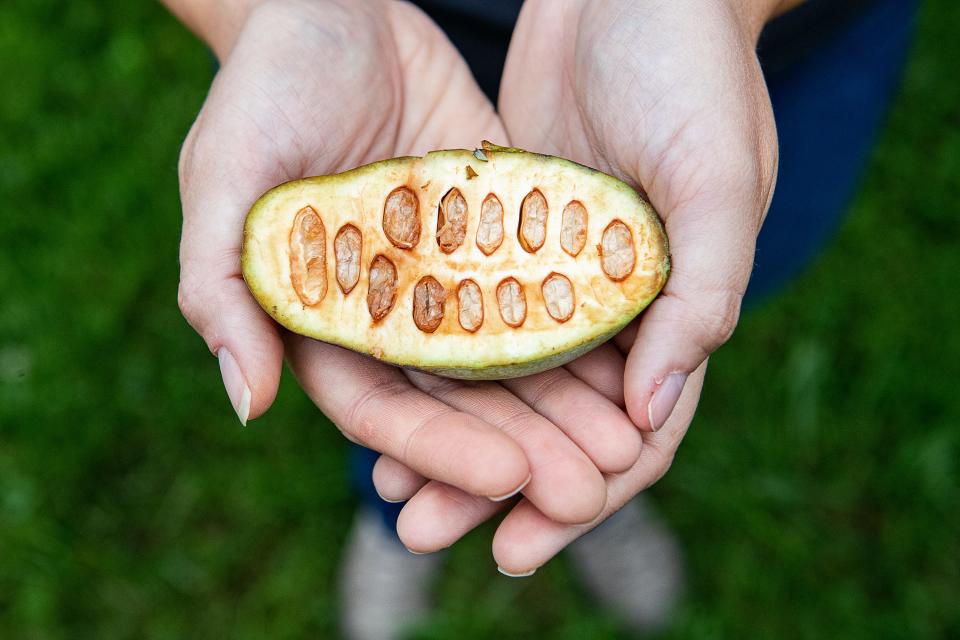
Sheri Crabtree and Kirk Pomper, who have headed KSU’s pawpaw program for more than two decades, welcomed me to their orchard just south of Frankfort in mid-July. We were about five weeks away from the three-week window when pawpaws are harvested at the beginning of September. Crabtree expected the freezing temperatures that hit in the late spring would limit some of this year's crop, but even so, I could still see clusters of the green fruit nestled in the leaves of the trees.
Over the past 30 years or so, pawpaw research at KSU has helped improve breeding methods and refined storage techniques for the fruit that can be found across much of Appalachia. With the help of this program, pawpaw growers have gained a better understanding of how the fruit ripens and how to best store it. The research program began in 1990 with a handful of seeds that were acquired at the Kentucky State Fair and then planted on the grounds at KSU.
Four years later, KSU became a USDA National Clonal Germplasm Repository for pawpaws. In layman's terms, it's a gene bank that has pawpaw trees growing from seeds that originated in 17 states.
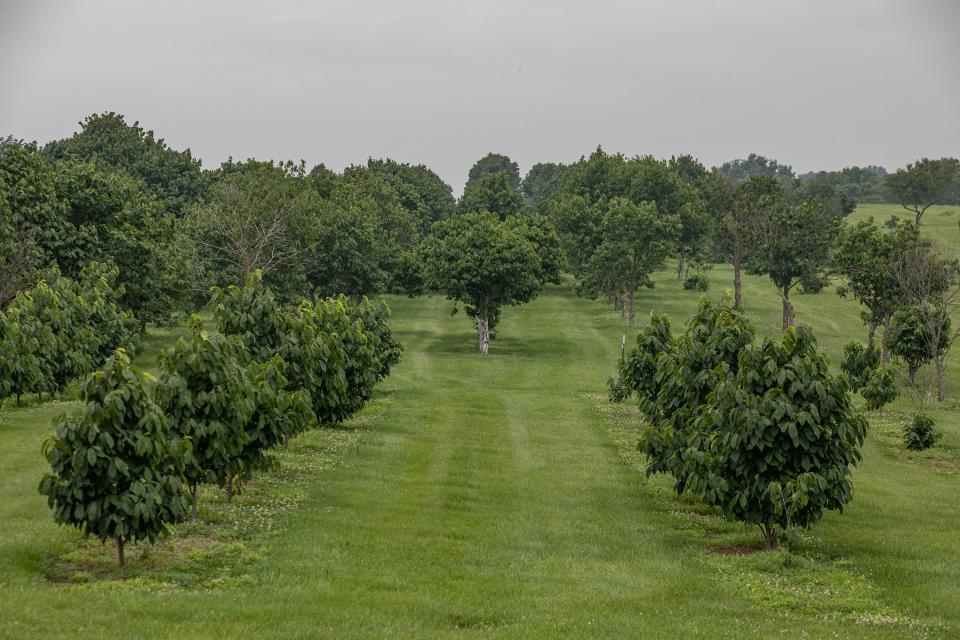
The program has about 10 acres of pawpaw orchards, and over the years, they’ve become known for three specific varieties ― KSU-Atwood, KSU-Benson and KSU-Chappell, which were all bred on the college’s grounds, and named for different figures in the school’s history. Think of this like discovering and specializing in growing a specific type of apple. Just like there are Honeycrisp, Gala, Granny Smith, and dozens of other varieties on the market, there are different types of pawpaws, too.
"We want to help growers that want to diversify and grow new, unique crops," Crabtree said. "So we want to want to help farmers, and we want to develop new improved varieties. So there's a good quality of fruits out on the market."
Cutting into a pawpaw feels a lot like slicing into an avocado, but instead of a lone pit in the center, there are two lines of large seeds across the center. Today KSU uses a machine with a large paddle to push the flesh through a strainer, but in the early days of the program, they had to be more creative. One now-dated method involved using an old salsa-making machine that they'd tweaked to crush pawpaw fruit and remove the seeds.
Louisville yard debate: Lawns, gardens or natural landscapes: What to know about the Louisville yard debate
They've been able to share these advancements with other pawpaw farmers in the area, as well, which helps improve productivity. And getting to that good fruit fast is important because part of the reason pawpaws are so elusive is they have an unreasonably short shelf life.
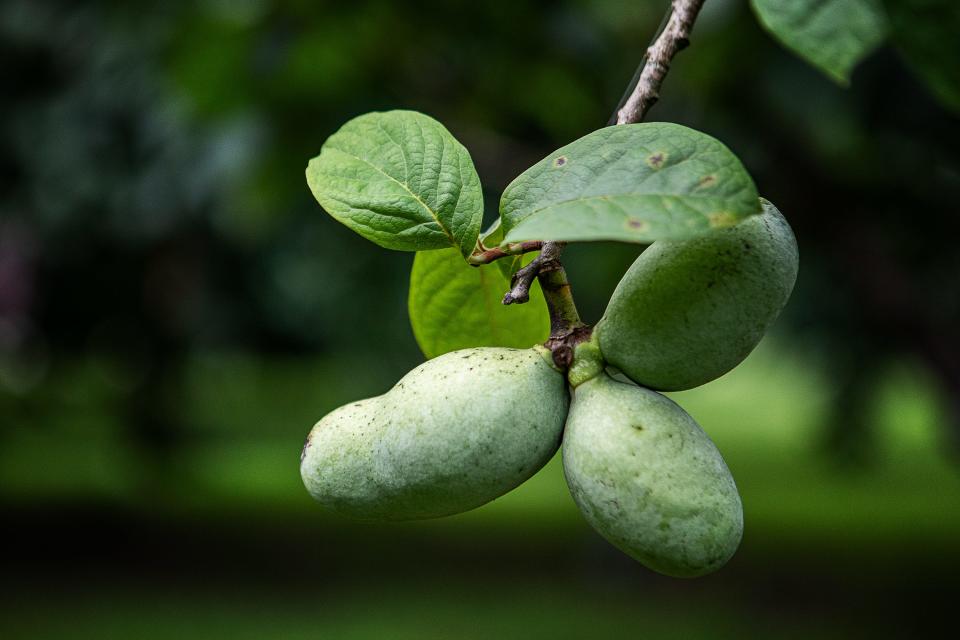
Once you pick a ripe pawpaw from a tree, you’ve only got about two or three days to eat it.
That's barely enough time to move it from a farm, let alone, into a consumer's hand.
Pawpaws most commonly end up as an ingredient in wine, beer, ice creams, and jams, Crabtree told me. They can also be used in baking as a substitute for bananas. Jeptha Creed in nearby Shelby County makes a pawpaw brandy, Wildside Winery in Versailles has a pawpaw wine and Sig Luscher Brewery in Frankfort has brewed a seasonal pawpaw beer in the past.
"We’ve looked at it from the beginning as a crop for small farmers in Kentucky, and I really think it's hitting its stride," Pomper told me.
Typically, people who know what a pawpaw is have memories of picking one off a tree in the woods decades ago, Crabtree told me. As land has been developed, the trees have become more rare in the wild and some pawpaw varieties from the early 20th century have died off entirely.
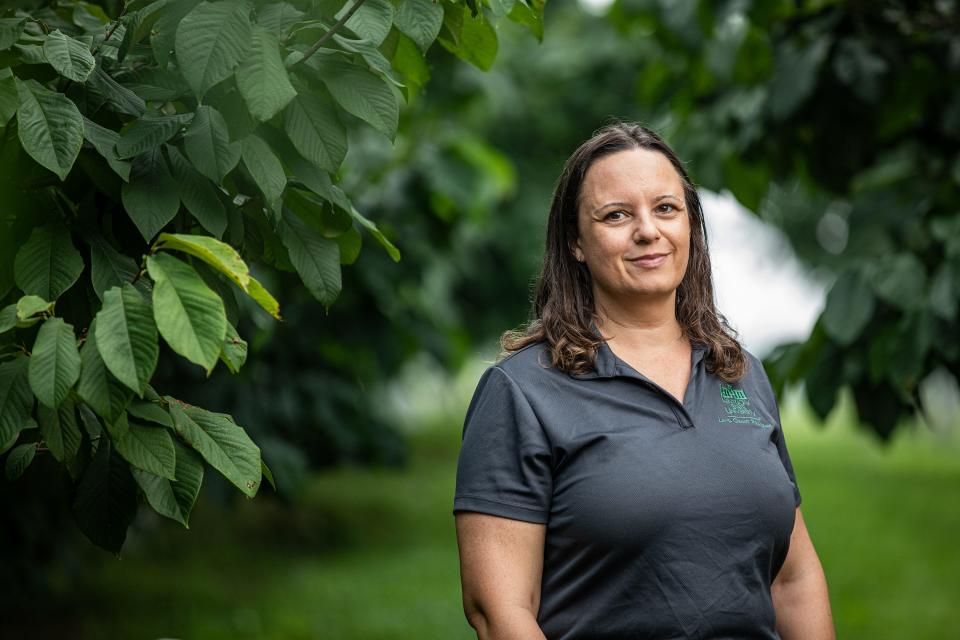
That’s wild to think about because this native tropical fruit prospered in early United States history. Writings suggest that chilled pawpaws were President George Washington’s favorite dessert and that Thomas Jefferson, who was a horticulturist by hobby, sent pawpaw seeds to share with his contacts in France. When Merriweather Lewis and William Clark ran out of food in Missouri during their expedition, pawpaws in the wild helped them survive.
KSU has a “mother tree” in its orchard, and the research team has been using a grafting technique to pair branches from that with strong seedlings to grow a supreme fruit — one with a greater flesh-to-seed ratio and tougher skin to protect the fruit in transportation.
And while Pomper says eventually he'd like to breed a fruit that would be a better candidate for a grocery store shelf, overall, he's noticed a growing interest in them from consumers searching for local products with smaller carbon footprints. Chefs in the gourmet market have begun dabbling in pawpaws, too. Pomper believes Kentucky's lone tropical fruit is having a moment.
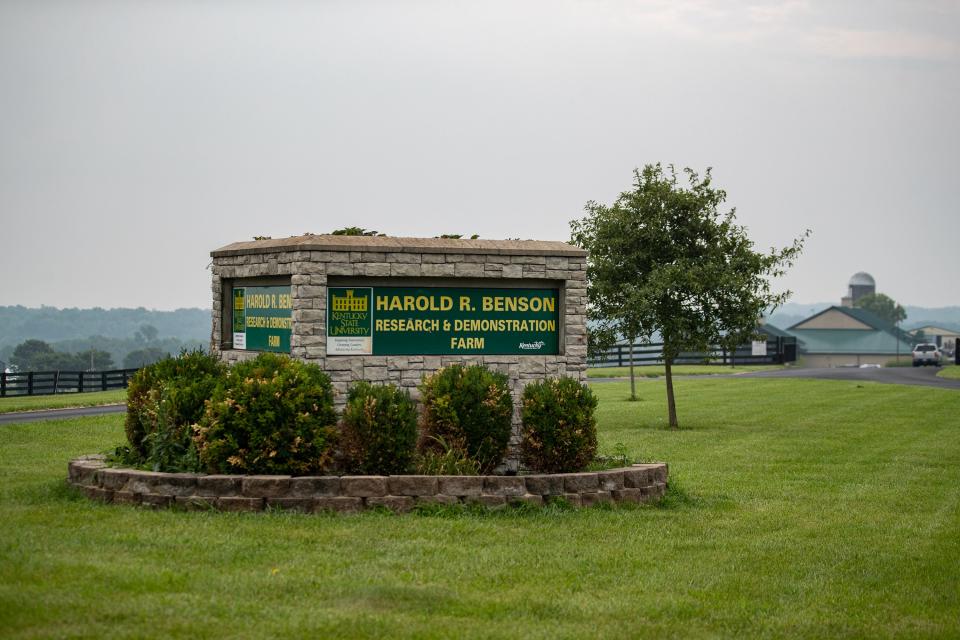
“It’s that unique tropical flavor, that banana-mango-pineapple, that really sets it apart from anything,” Pomper told me. “I think chefs are always looking for something different. ... It definitely has its niche now, the question is, can we get it to the point where you can find it in Kroger? We’re not there yet, but it has a lot of momentum.”
Features columnist Maggie Menderski writes about what makes Louisville, Southern Indiana and Kentucky unique, wonderful, and occasionally, a little weird. If you've got something in your family, your town or even your closet that fits that description — she wants to hear from you. Say hello at mmenderski@courier-journal.com or 502-582-4053. Follow along on Instagram and Twitter @MaggieMenderski.
This article originally appeared on Louisville Courier Journal: Kentucky State University is the world leader in pawpaw research

